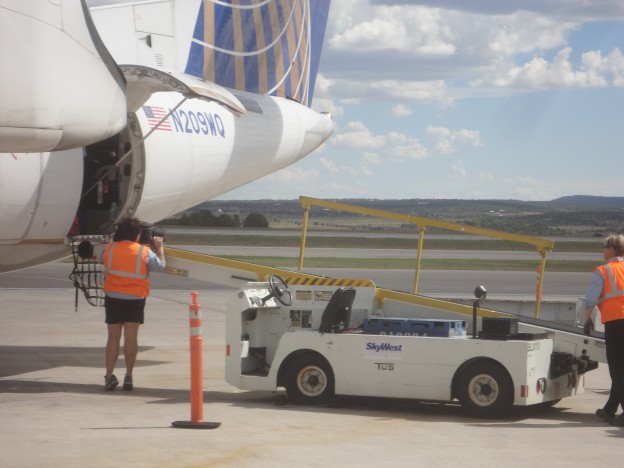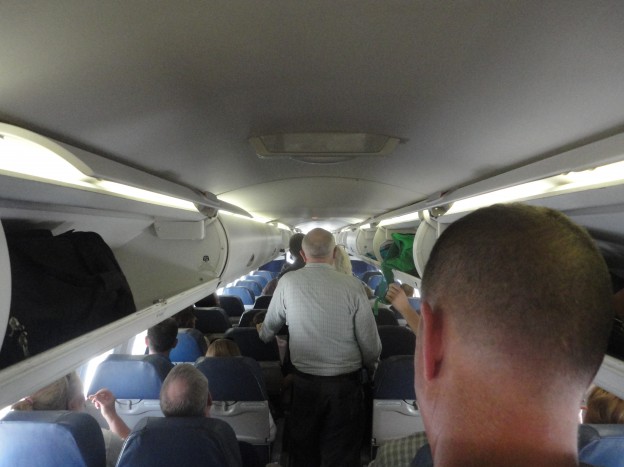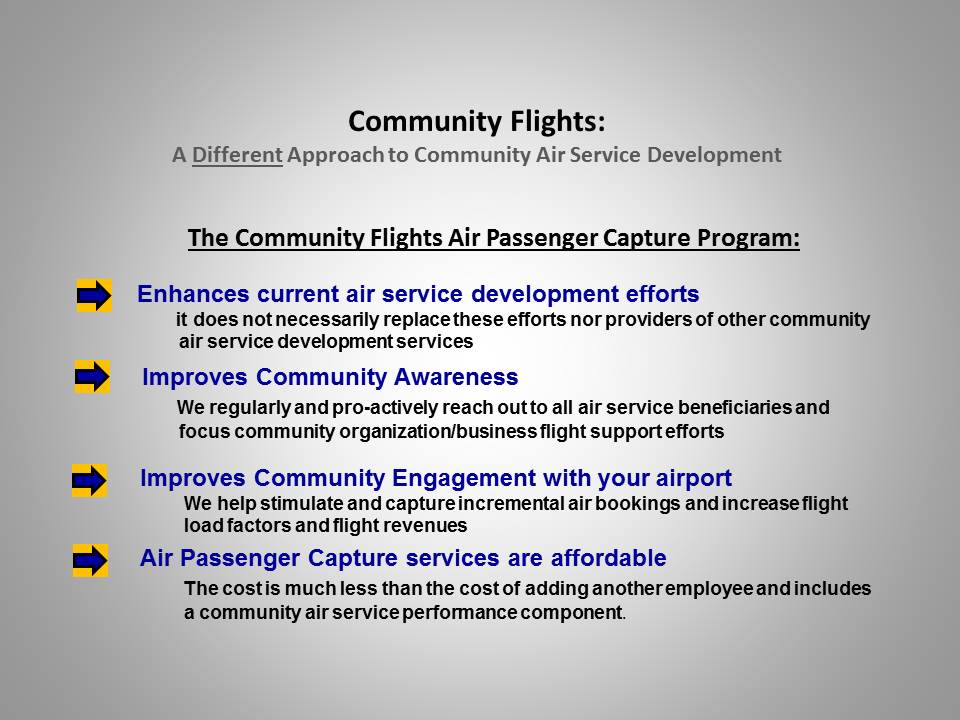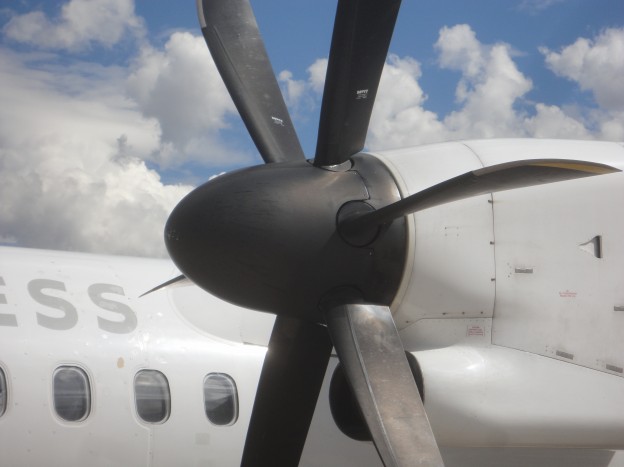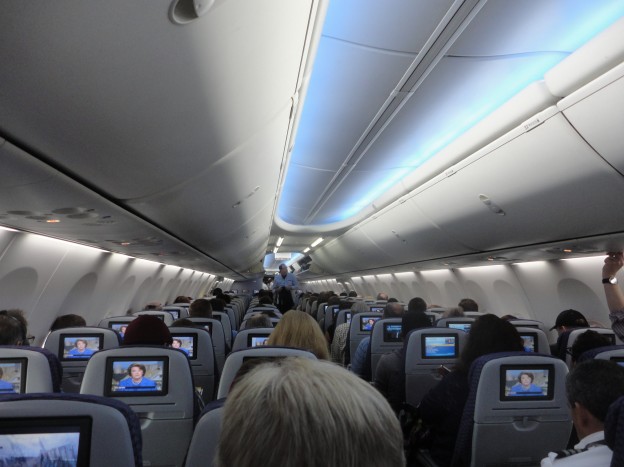Community Air Service Performance – Who is Responsible?
Hint: It’s Not the Airlines!
Community air service performance is critical for both communities and airlines. Communities want to keep up flight service, while airlines want increased profits from your community’s flight routes. Because airlines want to maximize profits, one would assume that airlines should bear most of the responsibility for improving your community air service performance, right?
Follow the Money – Airlines Are System-Focused
Airlines focus on maximizing system profit for their entire business and not on profits from specific markets. Most airlines do not advertise their air services to each community; rather they advertise at the national level to promote their overall quality and system offerings.
Airline System Profitability is More than the Sum of its Parts
Doesn’t every profitable air service market, add to overall airline system profitability? It depends. When an airline can show a solid profit on a specific route and provide passenger feed traffic revenue that helps all of its routes, that route service is very valuable to system profitability. Community air service performance that provides low feed traffic, however, is less valuable for airlines because it contributes little to all other system routes.
The Community Air Service Challenge
The current challenge for many communities is the availability of alternative airline routes that could offer major airlines both a profitable market route and more system profit. This could lure airlines to drop service to your community and move elsewhere.
Airlines are also attracted by incentives or airline risk abatements offered by other communities competing for airline service. Risk abatements also increase the profits of major airlines.
These two factors; alternative airline route options and many communities offering risk abatements, will prevent airlines from fully investing in marketing your community flights and improving your community air service performance.
My Community is an EAS Community.
Will this improve our chances of an airline putting more focus on our flights success?
Small subsidized EAS communities, often see more airline-initiated community advertising, support and development initiatives. Despite this enhanced airline support, community air service performance may still fall short of EAS subsidy qualification standards. If one airline serves many communities, then the overall quality of air support can suffer.
Your community cannot just rely on these airlines to meet the qualifications for EAS subsidy. Losing air service flights could mean the permanent loss of access to the air transportation system for your community. Airlines, however, can move the plane serving your community and will only lose a small fraction of their market when flights to your community are cancelled.
In short, airlines stay in business but your community will lose your airline service. Your community has the best chance for meeting EAS subsidy qualifications and retaining your subsidies and air service, if your community takes responsibility for community air service performance.
Recent actions like the EAS enforcement policy Docket OST-2014-0061 which came out on October 24, 2014, reaffirm the critical need to strengthen community air service performance. This new policy defines the future enforcement of the $200 maximum per passenger subsidy. Communities do not have much time to follow departmental standards. If a community still does not comply with standards by September 2016, it could lose its EAS subsidy status and most likely its air service.
The answer is clear. Each community needs to take on the responsibility for community air service performance. Communities need to invest in effective community air service support and development actions. The stakes are high for your communities.
____________
Community Flights is an air service support and development company that focus’ on community air service performance. www.communityflights.com provides more information about Community Flights approach, clients and experience. To find out more about Community Flights EAS Support and Development Programs Click Here for a short presentation



